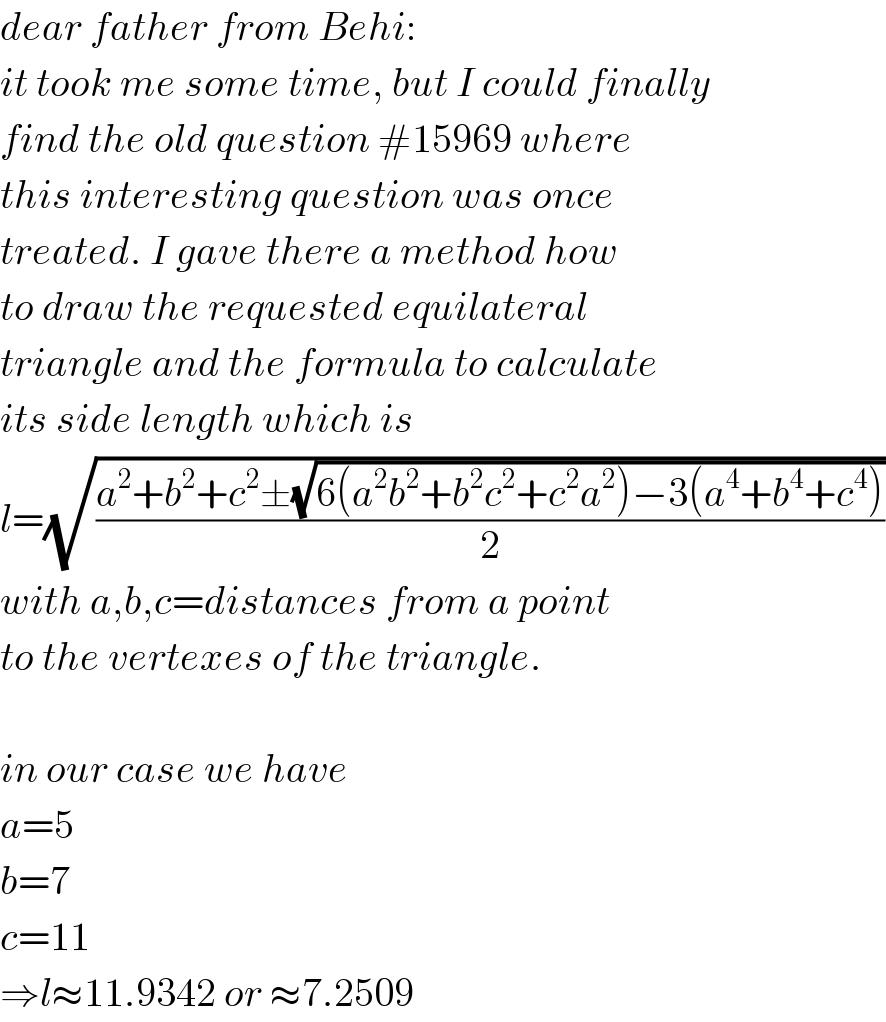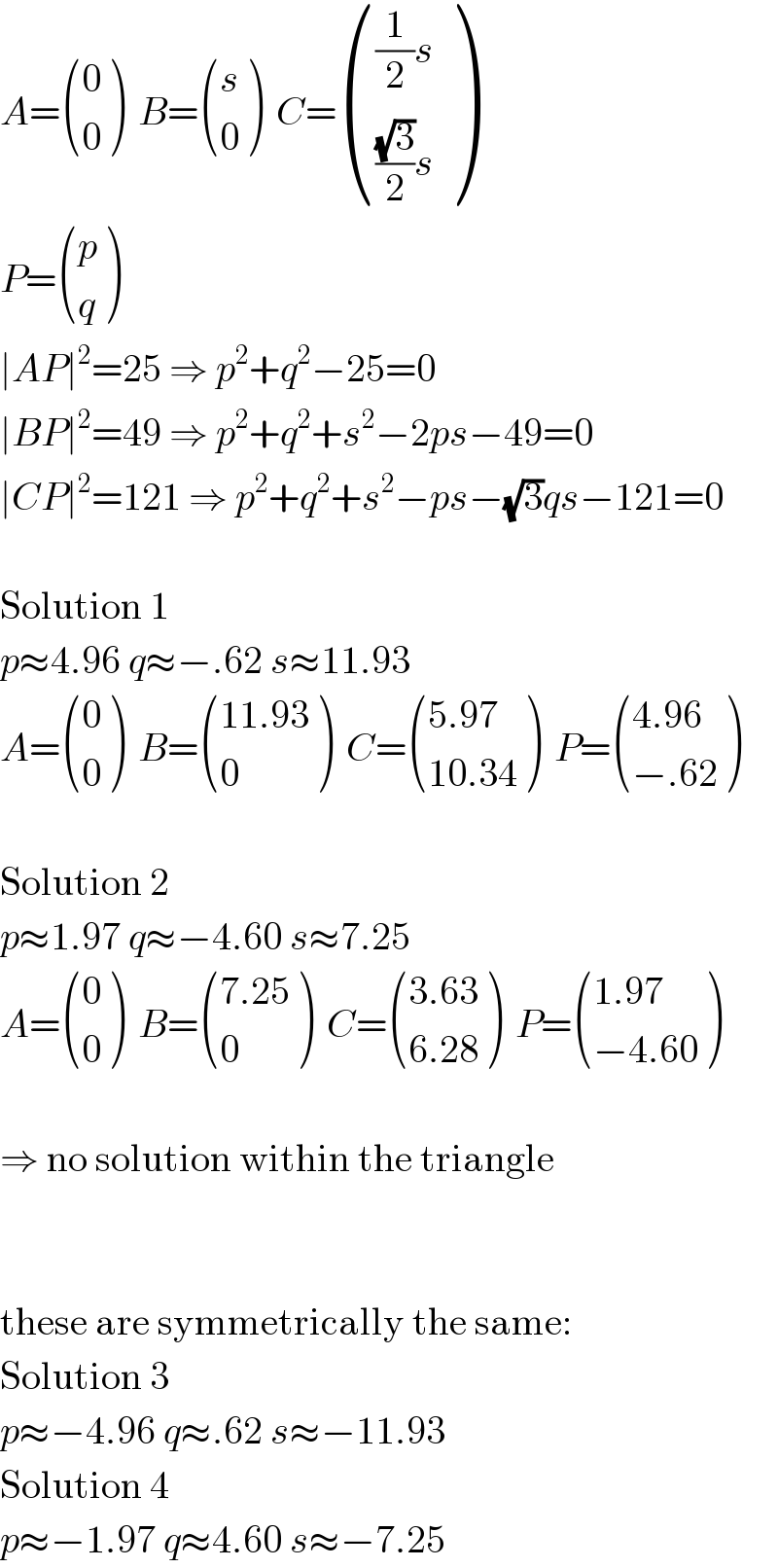
Question and Answers Forum
Question Number 47657 by behi83417@gmail.com last updated on 12/Nov/18

Commented by mr W last updated on 13/Nov/18

Commented by MJS last updated on 13/Nov/18

Commented by behi83417@gmail.com last updated on 13/Nov/18

Commented by mr W last updated on 11/Feb/20
![to see if the point p is inside or outside the triangle, we calculate the angles between a and b, b and c as well as c and a. if all of these angles are obtuse, then point p lies inside. if at least one of these angles is acute, then point p lies outside. in our example: with l=11.9342 cos α=((b^2 +c^2 −l^2 )/(2bc))⇒α=79.7°<90° cos β=((c^2 +a^2 −l^2 )/(2ca))⇒β=88.1°<90° cos γ=((a^2 +b^2 −l^2 )/(2ab))⇒γ=167.8° ⇒p is outside. with l=7.2509 cos α=((b^2 +c^2 −l^2 )/(2bc))⇒α=40.3°<90° cos β=((c^2 +a^2 −l^2 )/(2ca))⇒β=31.9°<90° cos γ=((a^2 +b^2 −l^2 )/(2ab))⇒γ=72.2°<90° ⇒p is outside. [conclusion not correct, needs to be amended...]](Q47701.png)
Commented by MJS last updated on 13/Nov/18

Commented by MJS last updated on 14/Nov/18

Commented by mr W last updated on 14/Nov/18

Answered by MJS last updated on 13/Nov/18

Commented by behi83417@gmail.com last updated on 13/Nov/18

